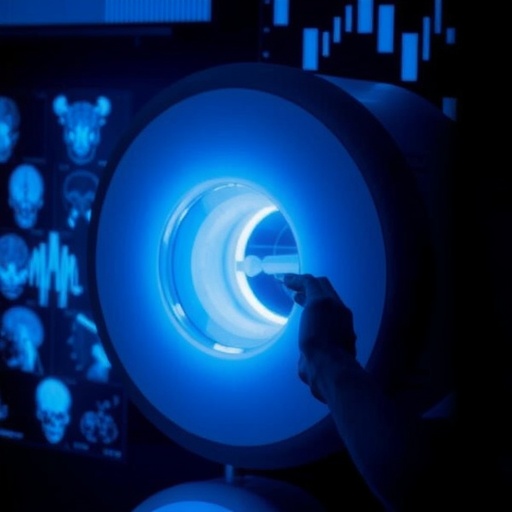The National Institutes of Health (NIH) awarded a $6 million grant to Cleveland Clinic to establish a national research consortium focused on improving the diagnosis and understanding the cause for Dementia with Lewy Bodies (DLB). The new Dementia with Lewy Bodies Consortium will centralize research efforts and create a national, coordinated registry for clinical data.
The five-year grant, led by principal investigator James Leverenz, M.D., of Cleveland Clinic, supports a multi-center study aimed at finding DLB biomarkers which can assist with diagnosis, detect disease progression, and ultimately measure response to treatment. The consortium will receive additional funding from The Lewy Body Dementia Association (LBDA) to fund an annual meeting of investigators to foster data sharing, collaboration and discovery.
DLB is a progressive neurological disorder which is the second most common form of neurodegenerative dementia in the elderly. However, there are no drugs approved to treat the symptoms nor treatments that offer meaningful hope for a cure.
"The Dementia with Lewy Bodies Consortium will be a vital network for coordinating research efforts for this common form of dementia," said Dr. Leverenz, director of Cleveland Clinic Lou Ruvo Brain Health Center. "Finding a biomarker for DLB is a top research priority and can ultimately improve the diagnosis and treatment of patients with this disease."
The disease is caused by a buildup of abnormal protein deposits, called "Lewy Bodies," in brain cells. An estimated 1.4 million people in the U.S. suffer from DLB and the associated Parkinson's disease dementia. Because symptoms can closely resemble other more commonly known diseases like Alzheimer's and Parkinson's diseases, it is currently widely underdiagnosed.
"The LBDA is proud to support the annual meetings of the Dementia with Lewy Bodies Consortium. This network is filling a vital gap in the infrastructure needed to advance DLB research and we are pleased to play an integral part in getting it off the ground," said Michael Koehler, LBDA's Chief Executive Officer. "The discovery of biomarkers will ultimately make this disease easier to diagnose and lead to the development of new medications."
Cleveland Clinic is a major research center in DLB and recently joined the first U.S. clinical trials designed to test two investigational drugs to treat the disease. Launched in 2016, the first study is testing RVT-101, a drug that has been shown to raise levels of acetylcholine, a vital chemical in the brain that affects memory and behavior. A second clinical trial is investigating nelotanserin, a medication that that has shown promise in calming neuropsychiatric disturbances such as hallucinations and sleep disturbances.
Impediments to biomarker development in DLB have included small numbers of patients, a lack of systematic patient characterization, and a failure to perform long-term follow up. Both Alzheimer's and Parkinson's have benefited from large consortiums that have advanced research by leveraging the strengths of several groups of research centers to combine efforts with standardized approaches to the study of the diseases.
Through the new DLB consortium, researchers from nine clinical sites will collect clinical information, brain imaging scans and biological samples from more than 200 DLB patients. By collecting clinical data and biofluids (blood and cerebrospinal fluid), the consortium will create the necessary foundation for biomarker development and have a secondary benefit of developing an ongoing subject sample available for additional studies.
The consortium also includes Florida Atlantic University, Thomas Jefferson University, Rush University, University of California San Diego, University of North Carolina, University of Pennsylvania, University of Pittsburgh, and VA Puget Sound Health Care Center/University of Washington. The research team will collaborate with the National Institute of Neurological Disorders and Stroke and the National Institute of Aging, which have established data banks and biorepositories.
"DLB research has previously been hindered by the need for large groups of patients to study in a consistent manner over time," said Dr. Leverenz. "The Dementia with Lewy Bodies Consortium will address this issue by bringing together a group of experts to study a large number of patients from across the country. By working together, our aim is to improve diagnosis and develop new therapies for patients."
The NIH grant is project number: 1U01NS100610-01.
###
About Cleveland Clinic
Cleveland Clinic is a nonprofit multispecialty academic medical center that integrates clinical and hospital care with research and education. Located in Cleveland, Ohio, it was founded in 1921 by four renowned physicians with a vision of providing outstanding patient care based upon the principles of cooperation, compassion and innovation. Cleveland Clinic has pioneered many medical breakthroughs, including coronary artery bypass surgery and the first face transplant in the United States. U.S. News & World Report consistently names Cleveland Clinic as one of the nation's best hospitals in its annual "America's Best Hospitals" survey. Among Cleveland Clinic's 51,000 employees are more than 3,500 full-time salaried physicians and researchers and 14,000 nurses, representing 140 medical specialties and subspecialties. Cleveland Clinic's health system includes a 165-acre main campus near downtown Cleveland, 10 regional hospitals, more than 150 northern Ohio outpatient locations – including 18 full-service family health centers and three health and wellness centers – and locations in Weston, Fla.; Las Vegas, Nev.; Toronto, Canada; Abu Dhabi, UAE; and London, England. In 2016, there were 7.1 million outpatient visits, 161,674 hospital admissions and 207,610 surgical cases throughout Cleveland Clinic's health system. Patients came for treatment from every state and 180 countries. Visit us at clevelandclinic.org. Follow us at twitter.com/ClevelandClinic.
Media Contact
Alicia Reale
[email protected]
@ClevelandClinic
http://www.clevelandclinic.org
############
Story Source: Materials provided by Scienmag




